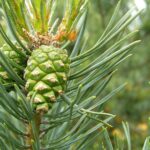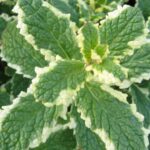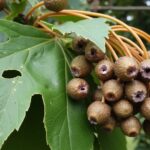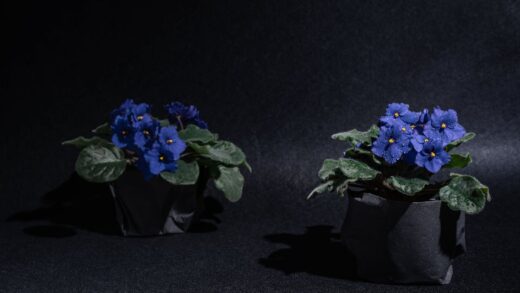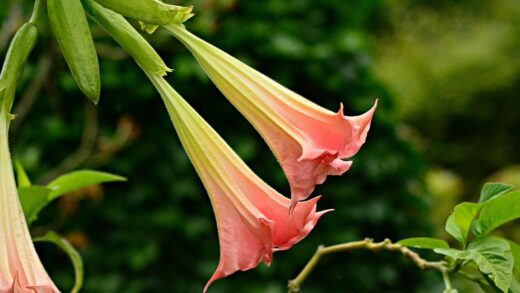Pruning a Scots pine is a practice best guided by the principle of “less is more.” This species develops a naturally beautiful, often rugged and picturesque character without significant human intervention. Unlike many deciduous trees or shrubs, pines do not respond to hard pruning by sending out vigorous new growth from old wood. Therefore, any pruning must be done with a clear purpose, a respect for the tree’s natural form, and an understanding of its specific growth habits. The primary reasons for pruning a Scots pine are to maintain its health by removing dead or diseased wood, to correct structural defects in young trees, and, for more specialized aesthetic goals, to control its size and density through the technique of candling. A thoughtful, conservative approach to pruning will enhance the tree’s health and beauty for years to come.
The fundamental rule of pruning pines is to recognize that they grow from the tips of their branches. Each spring, the terminal bud at the end of a branch elongates into a new shoot, called a “candle.” Needles then emerge from this candle. Pines do not have dormant buds further back on the old, woody parts of their branches. This means if you cut a branch back to a point where there are no needles, that branch will not re-sprout; the stub will simply die back. All pruning cuts on live wood must be made carefully, either back to a lateral branch or by shortening the new candles in the spring.
The most common and necessary type of pruning for a Scots pine of any age is the removal of dead, damaged, or diseased branches. This is known as cleaning or maintenance pruning and can be performed at any time of the year without harming the tree. Removing this wood is beneficial for several reasons: it improves the tree’s appearance, it eliminates potential entry points for wood-boring insects and decay fungi, and it can improve air circulation within the canopy, which helps to reduce the risk of foliar diseases.
For aesthetic pruning, the goals can vary. Some may wish to create a more open, layered structure to highlight the tree’s beautiful bark and branching pattern, a style often seen in Japanese gardens. Others may want to maintain a more compact, dense form, especially for pines grown in smaller spaces or as hedges. These more intensive pruning techniques require a greater understanding of the tree’s growth cycle and must be performed with precision and at the correct time of year to achieve the desired effect without damaging the tree’s long-term health.
Understanding pine growth habits
To prune a Scots pine effectively, it is essential to first understand its unique annual growth cycle. The tree’s growth for the entire year is predetermined by the buds that were formed during the previous growing season. In the spring, as temperatures rise, these buds begin to swell and elongate, forming the characteristic upright, new shoots known as “candles.” These candles are initially bare, but within a few weeks, new needles will begin to emerge and fan out from them. The candle will then harden off and become a permanent extension of the branch.
The length that a candle grows in a single spring determines the length of that branch’s extension for the year. The vigor of the tree, its genetics, and the environmental conditions of the previous year all influence the length of these candles. At the tip of this newly extended branch, a new terminal bud and several smaller lateral buds will form during the summer. These are the buds that will be responsible for all of the following year’s growth. This predictable, once-a-year growth pattern is very different from many other plants that can grow continuously throughout the season.
This growth habit has critical implications for pruning. Because new growth only originates from these buds at the tips of the branches, you cannot simply shorten a branch by cutting it back to a random point along its length. Doing so will leave a leafless stub that has no buds and therefore no way to produce new growth. This stub will eventually die. Any cut made to shorten a branch must either be made back to a point where a smaller, living side branch exists, or it must be done by pinching the new candle before its needles have developed.
This also explains why pines are unsuitable for severe rejuvenation pruning. You cannot cut an overgrown, old Scots pine back hard in the way you might a lilac or a forsythia and expect it to regrow from the base. A hard pruning that removes all the needle-bearing tips will almost certainly kill the tree. All shaping and size management must be done proactively and gradually, by working with the tree’s new growth each year, rather than reactively trying to correct years of overgrowth with a single, drastic cut.
The best time of year for pruning
The optimal time to prune a Scots pine depends on the type of pruning being done. For the simple removal of dead, broken, or diseased branches, this can be safely done at any time of year you notice them. Since you are only removing non-living tissue, there is no risk of harming the tree’s growth cycle. In fact, promptly removing diseased wood can be beneficial in preventing the spread of the pathogen. Using a sharp pruning saw or loppers will ensure a clean cut that the tree can seal over more effectively.
For any pruning that involves cutting into live wood for structural or shaping purposes, the best time is during the tree’s dormant season, typically in the late winter or very early spring before the new growth begins. Pruning during dormancy offers several advantages. Firstly, the tree is not actively growing, so the pruning will not interfere with its energy production or allocation. Secondly, the flow of sap is at a minimum, which means the cuts will “bleed” less sticky resin. This is not only cleaner for the gardener and the tools but also makes the wound less attractive to insect pests that are drawn to the scent of fresh sap.
The one major exception to the dormant-season rule is the specific technique of candling, which is done to control the size and increase the density of the pine. This must be done in the spring, during the brief window when the new candles have elongated but before their needles have fully opened and hardened. This timing is critical because it allows you to control the current season’s growth. This technique is used for shaping and is not for removing entire branches.
You should generally avoid pruning live branches in the late summer and autumn. Pruning at this time can stimulate the tree to try and produce new growth, which will not have time to harden off properly before winter and will be killed by the first hard frost. This can be a significant waste of the tree’s energy reserves right before it needs them for winter survival. Pruning in the fall also creates fresh wounds at a time when fungal spore activity can be high, increasing the risk of infection.
Techniques for structural pruning
Structural pruning is most effective when performed on young Scots pines to guide their development into a strong and well-formed mature tree. The primary goal is to establish a single, dominant central leader—the main upright trunk. Sometimes, a young pine will develop two or more competing leaders, known as co-dominant stems, which can form a weak, V-shaped attachment. As the tree grows, this junction is a common point of failure during storms. To correct this, you should select the strongest, straightest leader to keep and remove the others entirely by cutting them back to the trunk.
Another goal of structural pruning is to ensure good spacing between the main lateral branches that form the tree’s scaffold. You should aim for branches that are well-distributed both vertically and radially around the trunk, like spokes on a wheel. If two branches are growing too close together, one directly above the other, the lower branch will eventually be shaded out and may become weak. It is often best to remove one of them while the tree is young to ensure the remaining branch has adequate space and light to develop properly.
When removing a lateral branch, it is crucial to use the correct cutting technique to allow the wound to heal properly. You should not cut the branch flush with the trunk, nor should you leave a long stub. Instead, locate the “branch collar,” which is the slightly swollen ridge of tissue where the branch joins the trunk. You should make your cut just outside of this collar, angling it away from the trunk. The branch collar contains specialized cells that will grow over and seal the wound; cutting into it will damage this healing ability, while leaving a stub will prevent it from sealing at all.
For larger branches, a three-cut method is recommended to prevent the weight of the falling branch from tearing the bark down the side of the trunk. First, make an undercut about 30 centimeters out from the trunk, cutting about a third of the way through the branch. Second, make a top cut a few centimeters further out from the undercut; the branch will break away cleanly between these two cuts. Finally, remove the remaining stub with a careful, precise cut just outside the branch collar.
Candling for density and size control
Candling is a specialized pruning technique used to control the annual growth of a pine without cutting into the old wood. This method is ideal for keeping a Scots pine more compact and denser than its natural habit, making it suitable for smaller gardens, formal landscapes, or for developing bonsai specimens. The process involves manually shortening the new spring growth shoots, or “candles,” before their needles have fully expanded. This reduces the extension of the branches for the current year and encourages the formation of more buds for the following year.
The timing for candling is absolutely critical and the window of opportunity is short, usually just a week or two in the spring. You must act when the candles have reached their full length but before the new needles have started to grow outwards from the candle sheath. If you do it too early, the candle may not have enough energy to develop properly; if you do it too late, the hardened needles can be damaged, and the effect will be less pronounced. The exact timing will vary each year depending on the weather.
The technique itself is simple. You can use your fingers to pinch off the desired amount of the soft, succulent candle, or use a sharp, clean pair of pruning shears to cut it. A common practice is to remove between one-third and two-thirds of the candle’s length. You can vary the amount you remove on different parts of the tree to influence its final shape. For example, by shortening the candles on the stronger, upper branches more than those on the lower, weaker branches, you can balance the tree’s energy and encourage a fuller, more conical shape.
It is important to understand that candling is an annual commitment if you wish to maintain a specific size and shape. The effect of one year’s candling will be to shorten that year’s growth and increase bud set for the next year, leading to denser foliage. If you stop candling, the tree will revert to its natural growth rate and habit. This technique allows for precise control over the pine’s form, but it requires diligence and a consistent effort each spring to achieve and maintain the desired aesthetic.
Removing dead, damaged, or diseased branches
The removal of dead, damaged, or diseased wood is the most fundamental and universally necessary type of pruning for a Scots pine. This is a matter of basic plant hygiene and is crucial for the long-term health and safety of the tree. Dead branches are not only unsightly but also serve as potential entry points and habitats for wood-boring insects and decay-causing fungi. By removing them promptly, you eliminate this risk and help the tree to better defend itself against these threats.
Identifying wood that needs to be removed is usually straightforward. Dead branches will have no live buds, will have brown, brittle needles or no needles at all, and the wood will be dry and snap easily. Damaged branches may be cracked from wind or snow, or may have sections of bark stripped away from mechanical injury. Diseased branches may show cankers, unusual growths, or areas of dieback. Any branch exhibiting these symptoms should be targeted for removal. This type of pruning can be done at any time of year.
The technique for removing these branches is the same as for structural pruning: you must make the cut back to a point of healthy growth. If the entire branch is dead, you should remove it at the trunk, being careful to cut just outside the branch collar. If only a portion of a branch is dead or damaged, you should trace it back to the nearest healthy, living side branch and make your pruning cut just beyond that junction. This ensures that there is living tissue to seal the wound and prevents the creation of a dead stub.
For safety, especially when dealing with larger trees, it is important to be cautious. Branches, even dead ones, can be heavy and can behave unpredictably when cut. Always be aware of your surroundings and ensure the area below the branch is clear. For any branches that cannot be safely reached from the ground with a pole saw, it is highly recommended to hire a professional, certified arborist. They have the training, equipment, and insurance to perform the work safely and correctly, protecting both you and the health of your tree.
📷 Arnstein Rønning, CC BY 3.0, via Wikimedia Commons





